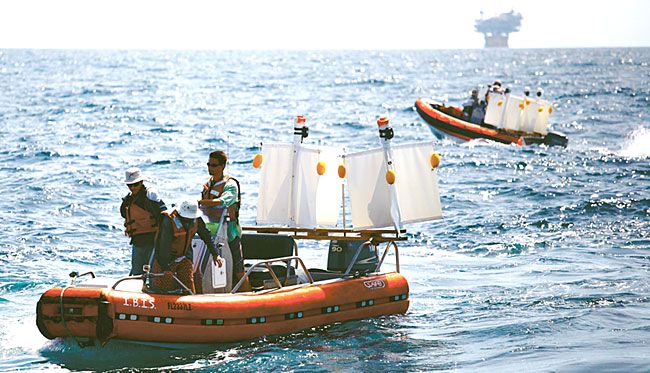National Academy of Sciences to run environmental program from BP settlement
DOI: 10.1063/PT.3.1852
On 15 November, the US government and BP Exploration and Production Inc reached a settlement that requires the company to pay $4 billion in penalties for the 20 April 2010 Deepwater Horizon disaster. More than half of that money will go to the National Fish and Wildlife Foundation for restoration projects in the five states most affected by the oil spill. Another $350 million will be used by the National Academy of Sciences (NAS) to establish a program on human health and environmental protection in the Gulf of Mexico. As Physics Today went to press, the settlement awaited final approval by a federal judge.
The NAS program will fund R&D, education and training, and environmental monitoring for offshore drilling. “It will be a good-sized program, but not the biggest thing here,” says academy spokesman William Skane. The money will be delivered to the NAS over 5 years and disbursed over 30. The settlement directs the NAS to “seek to advance scientific and technical understanding with the objective of enhancing the safety of offshore oil drilling and hydrocarbon production and transportation in the Gulf of Mexico and on the United States’ outer continental shelf.”
“We are anxious to get input from the science community and the residents community,” says Skane. Drilling technologies is an area in which physicists are likely to be involved, he adds. The settlement says the NAS should fund activities that are not adequately supported by private industry.
The academy is not known as a grant-giving agency, but it does distribute funds from the Department of Transportation for studies on such things as bridges, highways, and airports. Another precedent is the Radiation Effects Research Foundation (originally the Atomic Bomb Casualty Commission) in Hiroshima and Nagasaki, Japan, which was set up under President Harry S. Truman and continues to carry out research related to effects of the atomic bomb.
The $4 billion is a record criminal penalty for an environmental disaster. BP has also voluntarily given more than $500 million for research and restoration to such organizations as the Gulf of Mexico Research Initiative and the Baton Rouge Area Foundation. And the company set up a $20 billion fund for victims of the disaster. That money goes, for example, toward Gulf restoration, seafood testing and marketing, and tourism promotion.
Still pending are two settlements with state and federal bodies likely to far exceed the $4 billion criminal case. Fines under the Clean Water Act will be based on the volume of oil spilled, which is still in dispute. And the Natural Resource Damage Assessment involves calculating the spill’s damage to the environment, down to estimating losses by species.

Oceanographic researchers from the University of Miami release drifters in the Gulf of Mexico to study surface currents and the dispersal of oil. The studies are funded with money BP gave to the Gulf of Mexico Research Initiative after the Deepwater Horizon accident.
TAMAY OZGOKMEN

More about the Authors
Toni Feder. tfeder@aip.org
